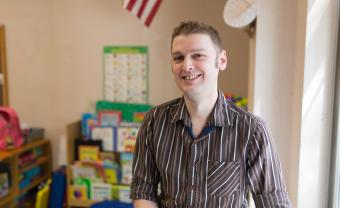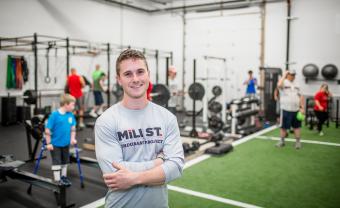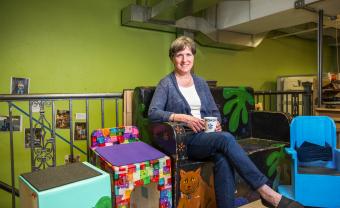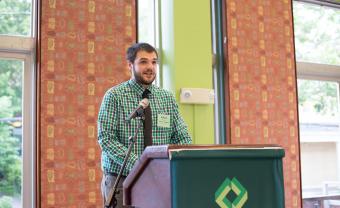Understanding Autism Spectrum Disorders: The Key to Ethical and Effective Supports
The number of children diagnosed with Autism Spectrum Disorders (ASD) has grown exponentially within the past two decades. Acknowledging that accurate numbers are difficult to measure for a disability defined by characteristics, the Centers for Disease Control Autism and Developmental Disabilities Monitoring Network reports that currently approximately one in every eighty-eight children is diagnosed with an Autism Spectrum Disorder.
Information about Autism Can Be Confusing
As a result of this reported prevalence, many sources have reported on the subject, including professional journals, the media, and personal accounts. With so much information, it is difficult to know what is to be trusted. The professional bias is to lean toward the scientific information found in peer-reviewed journals. However, it is important to recognize that there is bias in every source of information.
Research, and sources of research funding, are also questionable. In a summit of experts held at Harvard University by the Autism Self-Advocacy Network (ASAN) in December 2011, the ethical and moral issues regarding research agendas and funding sources for ASD research was the topic of discussion. A major point made by Ari Ne’eman, president of ASAN, was that the agenda for funding research is not in sync with the mandates of disability policy (Autism is one of the 13 disabilities listed in the Individuals with Disabilities Education Act of 1991), which addresses quality of life issues. The vast majority of funded research is focused on cures and understanding of the etiology of ASD.
Secondly, most educational research is aimed at early childhood and early elementary-aged children. Therefore, there is a bias following this same direction in the professional literature, because what gets funded and demonstrates results is what gets published. For every specific strategy study that demonstrates a result, the question remains: how many studies have been conducted that do not show a measurable effect? It seems only logical that journals would be interested in publishing articles that demonstrate an effect so that a conclusion or inference can be made to inform future research.
The media have covered ASD in news specials, talk shows, and news shows. Many of the guests on these shows have a personal experience and/or agenda that they want to share. For instance, celebrity Jenny McCarthy has gone on shows to share her views and concerns on the effects of vaccinations and the rise in the number of children who present with an Autism Spectrum Disorder. Movies, and television shows from Law and Order to Parenthood, have been made both about and including characters with the ASD label, and show them from various points of view. Again, this can present a confusing and sometimes contradictory view of autism spectrum disorders.
No One Strategy Will Be Universally Effective
Add to the mix that it is referred to as a “spectrum disorder.” By definition, it is a bio-neurologically based developmental disability defined by characteristics in three core areas: communication, social interaction, and behaviors and/or special interests. All have complex overlap and crossover, and each characteristic can vary along a spectrum of severity and/or intensity.
With all the variables and variability associated with ASD, specific strategies of support cannot be considered uniquely or globally effective to students with an ASD. Simply put, there are no “autism only” strategies, nor are there strategies that will work for every student with the diagnosis. What all this means for educators is that a filter is needed to glean relevant information from many sources of information.
In the Classroom: Students with ASD
When a student labeled with an ASD is going to enter a teacher’s classroom, the teacher should reference first and foremost the information from the family and child, the Individualized Education Plan (IEP), and all relevant reports directly related to the student. For older students who have the invaluable skill of self-advocacy, they themselves are the best source of information. For ways to develop their understanding and guide their thinking when supporting a student on the spectrum, teachers should review the professional literature, with author advocates such as Anne Donnellan, Martha Leary, Herb Lovett, and Paula Kluth, advocacy organizations such Autism Society of America, or the real voice of individuals with autism, the Autism Self Advocacy Network, as well as the documented first-hand accounts of those with ASD.
The most accurate and useful information to educators has come from first-hand accounts. Temple Grandin, Donna Williams, Sean Barron, Stephen Shore, Stephen Hinkle, and many more have provided insights into the perceptions and challenges of ASD. These insights promote an understanding of the difficulty in communication, executive function, sensory integration, and movement challenges often perceived as “behaviors” of individuals with ASD. The bias with these accounts is that each is personal. Although every person with an ASD label experiences their own autism somewhat differently, first-hand accounts are still the most valuable for educators, because understanding leads to more meaningful supports by those who do not experience an ASD.
See the Child First
Our understanding of the disorders is still evolving. When interacting with and supporting a student with an ASD, it is important to remember that the disorder is pervasive in its impact on the quality of life for the individual and his/her interactions with the people and environment they encounter. Communication issues and social interaction challenges are often, if not always, linked. For example, if a student has difficulty communicating using words to gain the attention of a peer to initiate play, it is obviously going to limit the type of social interaction he or she will have with peers. What may appear to be “behaviors” for “no apparent reason” (poking or pushing a peer to get attention) may result from the frustration of not being able to communicate in a form that peers are familiar with and respond to on a daily basis: spoken language.
It is important for educators to recognize the linkage and not respond just to the poking or pushing behavior but look to the functional intent of that behavior – in this example, the attempt to gain a peer's attention to initiate play. The topography of a behavior does not tell you the intent; we need to investigate and gain insight into the purpose for each student.
As educators, we must see the child first, understand the uniqueness of that child and his or her specific challenges related to their autism spectrum disorder, and work on supports that bridge the gap of understanding. We can then “translate” those “behaviors” for others so that the culture of understanding and support can grow.
Learn More
Learn more about our special education programs, including our Graduate Certificate in Autism Spectrum Disorders: Allies & Advocates.
Related Articles & Stories
Read more about our students, faculty, and alumni.




